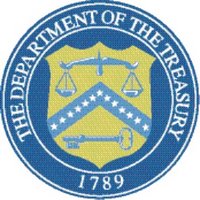OECD reports related to the Model Tax Convention
 The OECD Model Tax Convention on Income and on Capital is already on its sixth edition (2005), since it was first published in loose-leaf format in 1992. In order to do a through analysis of the OECD Model sometimes is necessary to rely on the background reports that were the basis of the changes to the Model. This summary is designed to provide you with an overview and respective hyperlinks to most of those reports (past and future).
The OECD Model Tax Convention on Income and on Capital is already on its sixth edition (2005), since it was first published in loose-leaf format in 1992. In order to do a through analysis of the OECD Model sometimes is necessary to rely on the background reports that were the basis of the changes to the Model. This summary is designed to provide you with an overview and respective hyperlinks to most of those reports (past and future).Previous OECD reports related to the Model Tax Convention
1. "Transfer pricing, corresponding adjustments and the mutual agreement procedure", adopted on 24 November 1982
This report is related to Arts. 9 and 25 in the context of transfer pricing adjustments. It reviews experience gained in that field by tax administrations and multinationals and the procedures available to resolve tax disputes. The report also deals with the issues relating to mandatory corresponding adjustments subject to an arbitration procedure. Several recommendations of this report were integrated with the text of the Commentary on Arts. 9 and 25, as part of the 1992 update.
2. "The taxation of income derived from the leasing of industrial, commercial or scientific equipment", adopted on 13 September 1983
This report deals with problems arising from the inclusion of income from leasing of equipment in Art. 12 of the 1977 version of the Model. As part of the 1992 update, the reference to such equipment in Para. 2 of Art. 12 was deleted and corresponding changes were made in the Commentary on Arts. 5, 7 and 12.
3. "The taxation of income from the leasing of containers", adopted on 13 September 1983
This report is limited to problems of inclusion of income from leasing of containers (falling within the notion of industrial, commercial or scientific equipment) in Art. 12 of the 1977 version of the Model. As part of the 1992 update, the reference to industrial, commercial or scientific equipment in Para. 2 of Art. 12 was deleted and corresponding changes were made in the Commentary on Arts. 5, 7 and 12.
4. “Taxation Issues Relating to the International Hiring-out of Labour", adopted on 24 August 1984
This report addresses the problems of hiring out labour, i.e. when a local employer wishing to use short-term foreign labour and avoid taxation of employment income in his state recruits the labour force through an intermediary established abroad. As part of the 1992 update, the Commentary on Art. 15 was amended to clarify situations covered by the exception of Para. 2 of Art. 15.
5. "Thin capitalisation", adopted on 26 November 1986
This report considers the issues of financing and thin capitalization, discusses the international effects of the various national approaches and analyses to what degree unjustifiable double taxation may be relieved with the assistance of tax treaties. As part of the 1992 update, this report resulted in changes in the Commentary on Arts. 9, 10, 11, 23A and 23B, 24 and 25.
6. "Double taxation conventions and the use of base companies", adopted on 27 November 1986
This report deals with the issues of the use of so-called base companies, the counteracting domestic anti-abuse measures and their compatibility with tax treaties. The report concludes that these measures are regarded as generally consistent with the spirit of international tax treaties but that the Member countries should nevertheless relieve double taxation as long as there is no clear evidence of treaty abuse. As part of the 1992 update, changes were made in the Commentary on Arts. 1, 9, 10 and 24.
7. "Double taxation conventions and the use of conduit companies", adopted on 27 November 1986
This report considers the issues of improper use of tax treaties by use of conduit companies. The report deals with implications of the Model Tax Convention and specific treaty provisions for conduit companies. As part of the 1992 update, the recommendations of this report were incorporated in the Commentary on Arts. 1, 4,10, 11 and 12.
8. "The taxation of income derived from entertainment, artistic and sporting activities", adopted on 27 March 1987
This report describes the main problems which arise in taxing income from entertainment, artistic and sporting activities at the national and international levels and suggests ways in which these problems can be overcome. As part of the 1992 update, Art. 17 was amended to replace "athlete" with "sportsman" and the Commentary on Art. 17 was extended.
9. “Tax Treaty Override”, adopted on 2 October 1989
This report discusses treaty override by examining the rules of international and domestic law, considering the possible legal remedies to treaty overrides and discussing different practical examples. The report includes a recommendation for Member countries to avoid enacting “overriding” legislation and to address bilaterally or multilaterally problems connected with a tax treaty. No amendments to the Model Tax Convention or the Commentary were adopted.
10. "The 183 day rule: some problems of application and interpretation", adopted on 24 October 1991
This report clarifies the interpretation of Art. 15 in several respects, and in particular the calculation of the 183-day rule. As part of the 1992 update, the recommendations of the report were incorporated into the Commentary on Art. 15.
11. "The tax treatment of software", adopted on 23 July 1992
This report analyses the treatment of software rights and payments for software under domestic laws and tax treaty law, as well as the application of the OECD Model to these payments. As part of the 1992 update, the Commentary on Arts. 7, 12 and 14 was amended.
12. "Triangular cases", adopted on 23 July 1992
This report analyses the problems concerning triangular cases involving the OECD Model, analyses countries' practices in this field and discusses ways of dealing with the problem. As part of the 1992 update, the Commentary on Arts. 10, 11, 12, 23A and 23B, and 24 was amended.
13. "The tax treatment of employees’ contributions to foreign pension schemes", adopted on 23 July 1992
This report deals with the tax treatment of pension contributions made by persons who render dependent personal services to multinational enterprises, whilst they are seconded abroad, and suggests a provision to be included in bilateral tax treaties. As part of the 1992 update, changes were made to the Commentary to Art. 18.
14. "Attribution of income to permanent establishments", adopted on 26 November 1993
This report discusses the most common problems and uncertainties related to attribution of income to permanent establishments. As part of the 1994 update, the suggested modifications to the Commentary on Art. 7 were included.
15. "Tax sparing – a reconsideration", adopted on 23 October 1997
This report deals with the issues of effectiveness and necessity of tax sparing clauses as well as suggestions to minimize related abuse. As part of the 2000 update, the recommendations of the report were incorporated into the Commentary on Arts. 23A and 23B.
16. "The application of the OECD Model Tax Convention to partnerships", adopted on 20 January 1999
This report deals with the application of the provisions of the Model Tax Convention to partnerships, focusing on specific factual examples. As part of the 2000 update, an additional Para. 4 was included in the text of Art. 23A, and the Commentary on Arts. 1, 3, 4, 5, 15, 23A and 23B was amended.
17. "Issues related to Article 14 of the OECD Model Tax Convention", adopted on 27 January 2000
This report deals with a number of problems relating to the taxation of professional services and other activities of an independent character, and the application of Art. 14. As part of the 2000 update, Art. 14 was deleted and corresponding changes were made in Arts. 3, 6, 10, 11, 12, 15, 17, 21 and 22, as well as the Commentary.
18. "Improving Access to Bank Information for Tax Purposes", declassified on 24 March 2000
This report describes the current position of the OECD Member countries as to access to bank information and suggests measures to improve access for tax purposes. This report had an impact on the 2005 update, which included amendments to Art. 26 and its Commentary.
19. "Clarification on the Application of the Permanent Establishment Definition in E-Commerce: Changes to the Commentary on the Model Tax Convention on Article 5", adopted on 22 December 2000
This report deals with the application of the current definition of permanent establishment in the context of e-commerce. The suggested changes mainly reflect the consensus that human intervention is not a requirement for the existence of a permanent establishment and that a web site cannot, in itself, constitute a permanent establishment. As part of the 2002 update, changes were incorporated into the Commentary on Art. 5.
20. “Restricting the Entitlement to Treaty Benefits", adopted on 7 November 2002
This report deals with the issues of restricting the entitlement to treaty benefits for entities and income covered by measures constituting harmful tax practices. It also discusses the use of the concepts of place of effective management and permanent establishment, as well as various other types of provisions, to reduce treaty benefits, and clarifies the concept of beneficial ownership. As part of the 2002 update, the Commentary on Arts. 1, 10, 11, 12, 23A and 23B was amended.
21. “Treaty Characterisation Issues Arising from E-Commerce", adopted on 7 November 2002
This report discusses various treaty characterization issues that may arise in electronic commerce, such as delimitation of business profits, royalties and technical fees, mixed payments, and the distinction between the provision of services and transactions resulting in the acquisition of property. As part of the 2002 update, the Commentary on Art. 12 was amended. See also the Report to working party no. 1 of the CFA on Tax Treaty Characterisation Issues Arising From E-Commerce.
22. “Issues Arising under Article 5 (Permanent Establishment) of the Model Tax Convention", adopted on 7 November 2002
This report discusses problems in applying the “fixed place of business” standard, the treatment of building sites, construction or installation projects, identifying preparatory and auxiliary activities and issues related to agency permanent establishments. As part of the 2002 update, the Commentary on Arts. 5, 10, 11, and 12 was amended.
23. "Changes to Articles 25 and 26 of the Model Tax Convention", adopted on 1 June 2004
As part of the 2005 update, Art. 26 and its Commentary were amended to further extend the scope of exchange of information. The Commentary on Art. 25 was also clarified with respect to confidentiality of information obtained in the course of the mutual agreement procedure.
24. "Cross-border income tax issues arising from employee stock option plans", adopted on 16 June 2004
This report addresses a number of issues arising from the use of stock options as part of employee remuneration packages. The main critical issues relate to characterization of income, taxing rights of benefits paid after the employee no longer works in a state or changes his residence, and taxation of benefits related to employment exercised in several states. As part of the 2005 update, the Commentary on Arts. 13, 15, 16 and 23 was amended.
25. "Employee Stock Option Plans: Impact on Transfer Pricing", adopted on 16 June 2004
This report deals with the transfer pricing issues in cases where stock options are granted to employees of an associated enterprise and discusses the impact of stock option plans on other intra-group transactions and cost attribution arrangements. No amendments to the Model Tax Convention or the Commentary were adopted.
26. "Taxation of Income from International Transport", adopted on 15 July 2005
This report deals with the concept of profit from activities directly connected or ancillary to the operation of ships or aircraft in international traffic. As part of the 2005 update, the Commentary on Arts. 3 and 8 was amended.
27. "Proposed Clarification of the Permanent Establishment Definition", adopted on 15 July 2005
This report deals with the concept of agency permanent establishment and the application of the permanent establishment concept in situations of a group company creating a permanent establishment of other group companies. As part of the 2005 update, the Commentary on Art. 5 was amended.
28. "Tax treaty issues arising from cross-border pensions", adopted on 15 July 2005
This report deals with several issues, namely characterization of pension and other social security payments, allocation of taxing rights and other issues related to foreign individual retirement schemes, pension schemes and pension funds. As part of the 2005 update, changes were made in Art 19 and Commentary on Arts. 18 and 19 were amended.
OECD discussion drafts related to the Model Tax Convention
This section lists a number of discussion drafts related to the Model Tax Convention and the Commentary thereon.
1. “Attribution of Profit to a Permanent Establishment Involved in Electronic Commerce Transactions”, discussion draft of 1 February 2001
This discussion draft provides a detailed analysis of the transfer pricing issues arising in attributing profit to a permanent establishment involved in electronic commerce activities. The paper is limited to an analysis of enterprises engaged in the retail distribution of entertainment products (“e-tailing”).
2. "Place of Effective Management Concept: Suggestions for Changes to the OECD Model Tax Convention", discussion draft of 27 May 2003
This discussion draft develops two alternative proposals to improve the place of effective management concept under Para. 3 of Art. 4 of the OECD Model. The first proposal seeks to refine the concept of “place of effective management” by expanding the Commentary explanations of how the concept should be interpreted. The second proposal puts forward a tie-breaker rule for persons other than individuals to modify Para. 3 of Art. 4 together with the Commentary thereon.
3. "Proposed Clarification of the Scope of Paragraph 2 of Article 15 of the Model Tax Convention", discussion draft of 5 April 2004
This discussion draft proposes changes to the Commentary on Para. 2 of Art. 15 to clarify its application in situations where services are provided through intermediaries. The proposed changes address the interpretation of the word “employer” and the distinction between employment and self-employment. The draft provides practical examples to illustrate the application of the rules.
4. "Attribution of Profits to Permanent Establishments", discussion draft released in parts: on 3 August 2004 (Part I General), 4 March 2003 (Part II Banks, Part III Global Trading of Financial Instruments) and 27June 2005 (Part IV Insurance)
This discussion draft aims to formulate the preferable approach to attributing profits to a permanent establishment under Art. 7. The discussion draft also examines the special considerations that need to be taken into account when profits are to be attributed to a permanent establishment of an enterprise carrying on global trading of financial instruments, banking or insurance businesses.
5. "Proposals for Improving the Process for the Resolution of Tax Treaty Disputes", discussion draft of 1 February 2006
This discussion draft examines ways of improving the effectiveness of the mutual agreement procedure under Art. 25, including the consideration of other dispute resolution techniques, which might be used to supplement the operation of the mutual agreement procedure. The proposal includes various changes to the Model Tax Convention, including a new paragraph to Art. 25.
Other OECD publications and documents related to the Model Tax Convention
This section lists a number of OECD publications and other documents related to the Model Tax Convention and the Commentary thereon.
"Transfer pricing guidelines for multinational enterprises and tax administrations", published in 1995
The OECD Transfer Pricing Guidelines maintain the arm's length principle of treating related enterprises within a multinational group and affirm traditional transaction methods as the preferred way of implementing the principle. The OECD transfer pricing guidelines are revised periodically.
"The Taxation of Global Trading of Financial Instruments", published in 1998
This publication reviews the factual background to global trading, analyses the challenges posed to traditional taxation methods and discusses a range of policy options to tackle the problems of global trading of financial instruments.
"Harmful Tax Competition, An Emerging Global Issue", adopted on 8 April 1998
This report addresses harmful tax practices in the form of tax havens and harmful preferential tax regimes in OECD Member countries and non-Member countries and their dependencies. It focuses on geographically mobile activities, such as financial and other service activities. The report defines the factors to be used in identifying harmful tax practices and goes on to make 19 wide-ranging recommendations to counteract such practices.
“OECD Model Agreement on Exchange of Information in Tax Matters”, released on 18 April 2002
This Model, developed by the Global Forum Working Group on Effective Exchange of Information, is a result of the ongoing work for eliminating harmful tax competition. The 1998 report identified the lack of the effective exchange of information as one of the key criteria in determining harmful tax practices. The Model, both in its bilateral and multilateral versions, is intended to establish the standard of what constitutes effective exchange of information.
"Guidance in Applying the 1998 Report to Preferential Tax Regimes (Consolidated Application Note)", released on 22 March 2004
The Consolidated Application Note provides guidance to assist governments in the evaluation of existing or future preferential regimes on a generic basis. It consolidates the application notes developed by the Forum on Harmful Tax Practices and provides guidance in assessing preferential regimes that apply to income from geographically mobile activities, i.e. excluding preferential regimes designed to attract investment in plant, buildings and equipment.
"Are the Current Treaty Rules for Taxing Business Profits Appropriate for E-Commerce?", released on 19 December 2005
This report presents an evaluation of the rules on taxing business profits and examines the alternatives for changes in the context of e-commerce. The report concludes that it would not be appropriate, at this stage, to embark on changing the existing treaty rules. Nevertheless, on the basis of the report several issues will continue to be monitored.
“Manual on the implementation of exchange of information provisions for tax purposes”, approved on 23 January 2006
This manual provides an overview of the operation of exchange of information provisions and some technical and practical guidance. The manual is designed to assist tax authorities in dealing with exchange of information for tax purposes, with a view to improving the efficiency of such exchanges. The manual discusses information exchange on the basis of the revised text of Art. 26, which was agreed by the OECD in June 2004.
Labels: Tax Treaties






